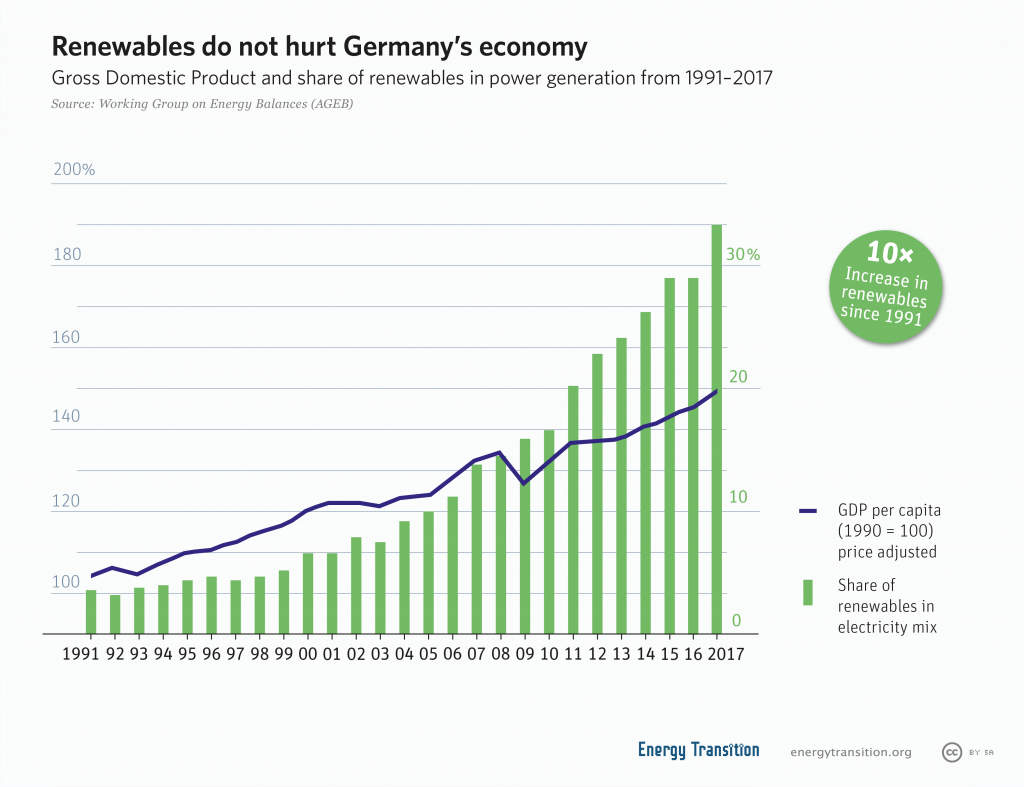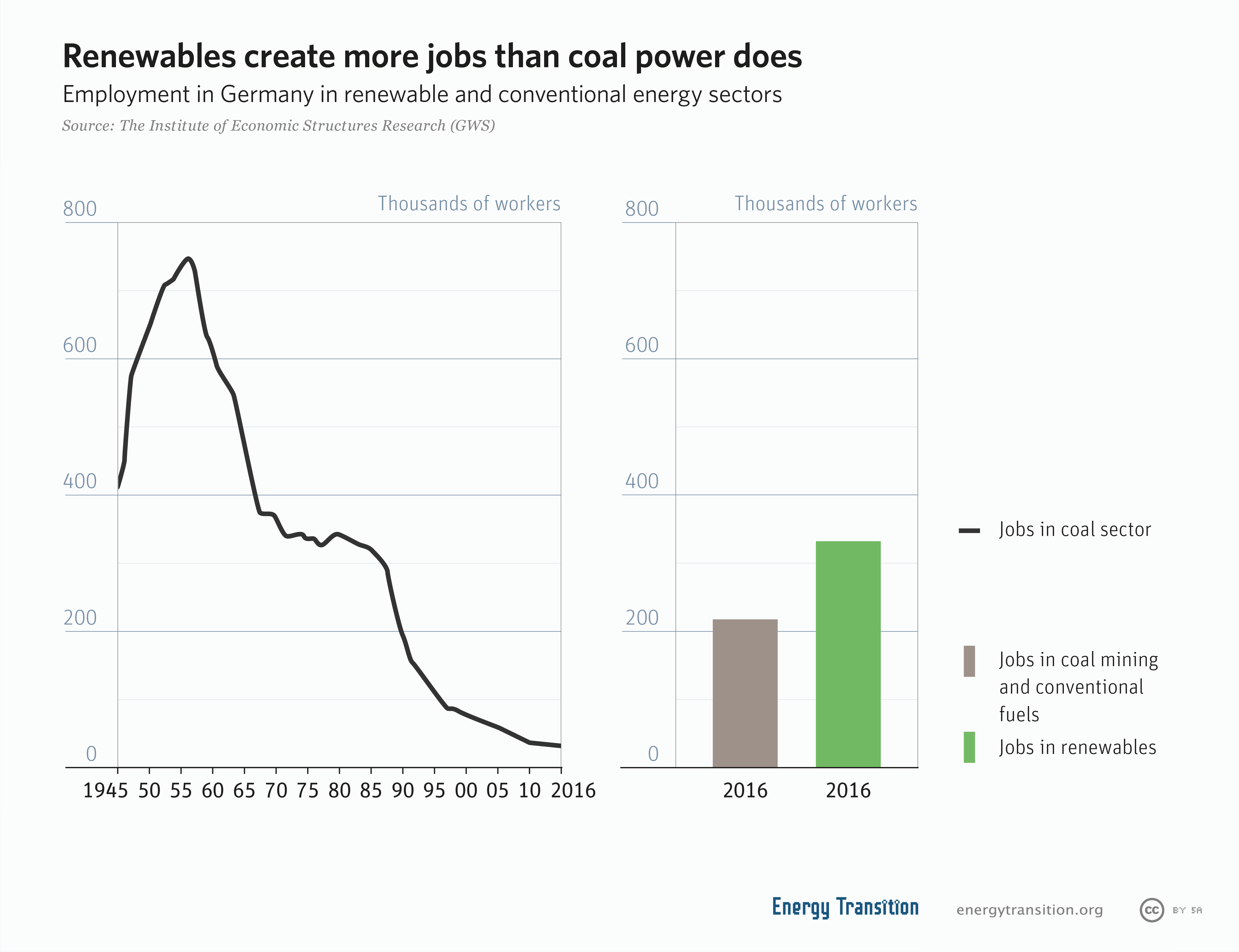The energy transition boosts green innovations, creates jobs, and helps Germany position itself as an exporter of green technologies. Half of the world’s solar production equipment is made in Germany.
Germany is an export-based economy and is an innovator in green technologies, with a target of exporting 80 percent of its solar PV products by 2020.
While Germany lost its last major solar panel producer in 2017, the country still supplies more than half of all production equipment for the global PV sector. This means that the world is making solar panels on production lines made in Germany. Asia, and China in particular, import large quantities of solar technology. The German Wind Energy Association (BWE) puts the wind industry’s current export ratio at 65 to 70 percent, which may grow as demand for offshore wind technology increases.

The market for products that increase energy efficiency is already significant, which is especially important, because this market will only continue to grow, similar to the market for renewables. Germany is a major player on both of these markets. A study conducted by corporate consulting firm Roland Berger found that the market for energy efficiency products will continue to grow rapidly, doubling in volume from 2005 (450 billion euros) to 2020.
Not surprisingly, a lot is being invested in development in this sector, where Germany makes up the second largest share of the pie at 20 percent, behind the US at 24 percent. In particular, midsize firms are benefiting from the growing demand for energy efficiency products and applications, with more than half of the sales revenue from environmental protection goods (of which energy efficiency is a subcategory) being posted by firms with fewer than 250 employees.

In Germany, roughly 332,000 people already worked in the renewables sector in 2017 (down from a peak of 380,000 in 2011 due to layoffs in the solar sector). In 2015, the German Ministry for Energy and Economic Affairs estimated that the net number of additional jobs brought about by renewables would reach 100,000 by the year 2030 and 230,000 by 2050.